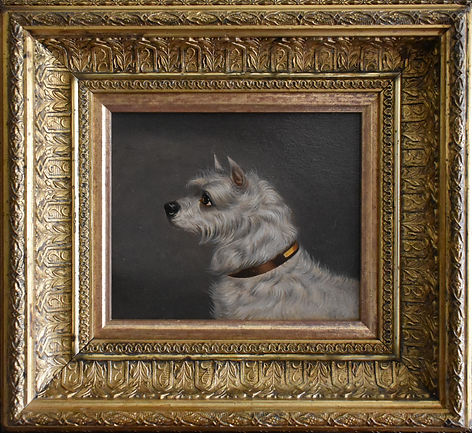
Edwin Loder of Bath (1827-1885)
The ambush (Fritz and a Manchester terrier)
inscribed 'Fritz' (lower right)
oil on canvas
10 x 12 in. (25.3 x 30. 4 cm.)
frame 13 ¼ x 15 ¼ in. (33.6 x 38.8 cm.)
sold
It is likely that Fritz belonged to Loder, as the terrier appears in the artist's work on a number of occasions, including one of the below paintings.
For further information on this painting, please email info@tomroothfineart.com


Edwin Loder of Bath (1827-1885)
‘Fritz’; and A friend
the former inscribed inscribed ‘Fritz’ (lower right)
oil on card
5 ¼ x 6 ½ in. (13.3 x 16.6 cm.)
a pair (2)
It is likely that Fritz was the artist’s dog, as he appears in a number of other works, including The ambush.
sold
For further information on this painting, please email info@tomroothfineart.com


Edwin Loder of Bath (1827-1885)
A white and tan short-haired terrier; and A white short-haired terrier
oil on card
image: 5 ¼ x 6 ⅝ in. (13.3 x 16.8 cm.)
frame: 12 x 14 ¼ in. (30.4 x 35.6 cm.)
a pair (2)
sold
For further information on this painting, please email info@tomroothfineart.com

